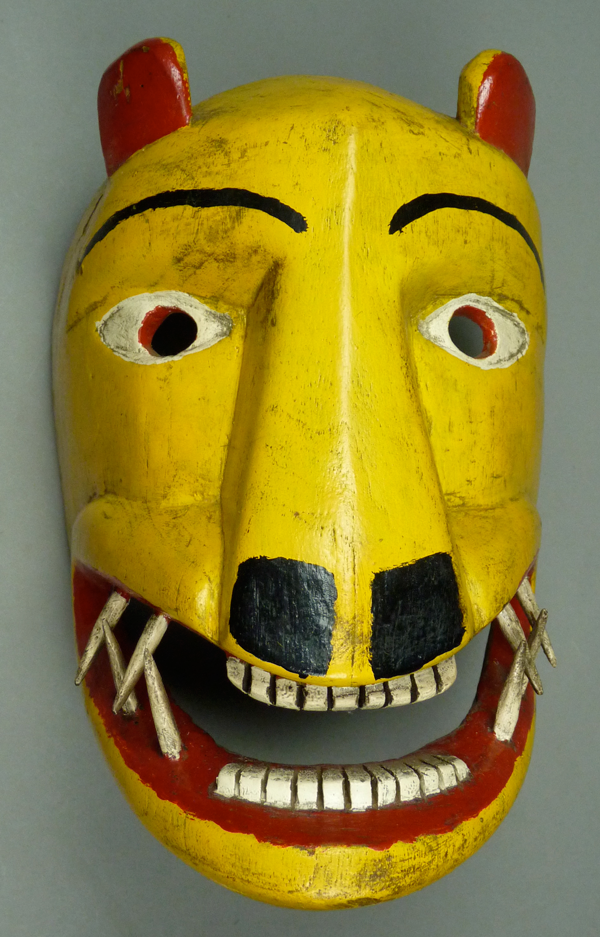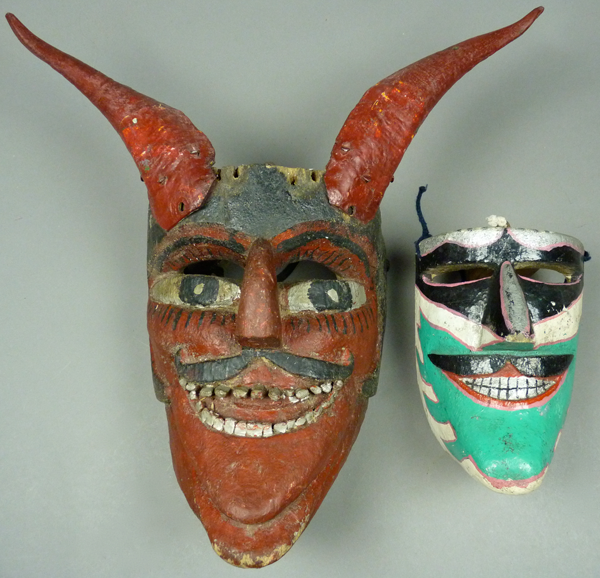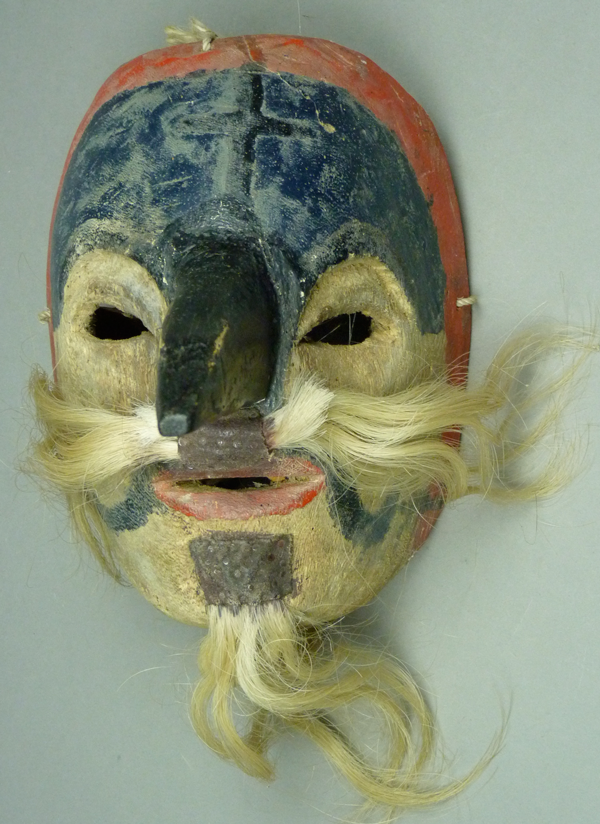There is a style of Mexican mask that collectors are prone to call Moros. Indeed this name tends to be a generic label for masks from various dances, particularly in Northern Veracruz, but also in other states. My goal is to underscore some design elements that are so typical for this area that, when you see them, you realize that you are looking at a carving from the Huayacocotla/ Carpinteros area. I would certainly begin with an actual Moor, but ironically, of the five masks that encouraged me to write about this subject, none are actually Moors or Christians. However, all five represent Spaniards, four Soldiers and one Cowboy. I will start with an Español (Spaniard) that was used in Carnaval.
I obtained this mask from the Indigo Gallery, in Philadelphia, in 1996. It had been originally collected in the field by Jaled Muyaes and Estela Ogazon in about 1990, in Cruz de Ataque, a place near Huayacocotla. It was viewed as being much older, perhaps as old as the 1920s. Note the blue color around the eyes, meant to indicate that this mask depicts a Caucasian or a Christian.
The patina is impressive. The iron staple in the forehead is a typical marker from this area. We saw this feature on the Mojica masks, for example. The red spots on the cheeks confirm the identity of this dancer as a Spaniard. Because of his light skin he has sunburn.





